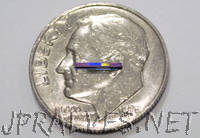
“Light detection and ranging, or lidar, is a sensing technology based on laser light. It’s similar to radar, but can have a higher resolution, since the wavelength of light is about 100,000 times smaller than radio wavelengths. For robots, this is very important: Since radar cannot accurately image small features, a robot equipped with only a radar module would have a hard time grasping a complex object. At the moment, primary applications of lidar are autonomous vehicles and robotics, but also include terrain and ocean mapping and UAVs. Lidar systems are integral to almost all autonomous vehicles and many other robots that operate autonomously in commercial or industrial environments.”
